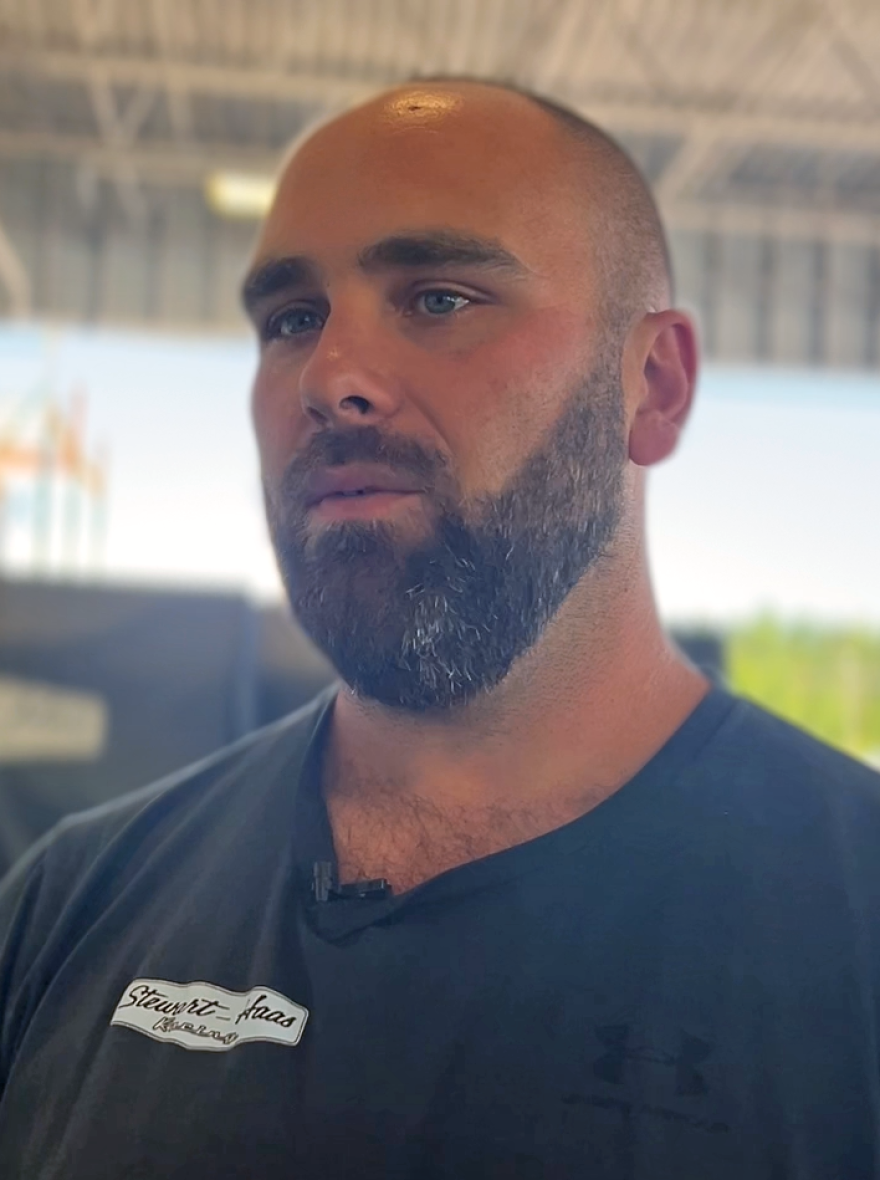The final race of the NASCAR Cup Series takes place on Saturday, Aug. 26 in Daytona, Florida — in state's hottest month of the year. For the pit crews and the trainers who support them, preparation boils down to steamy afternoons at practice facilities just north of Charlotte.
Bill Heisel specializes in sports medicine that helps drivers and pit crews succeed in a race like the Coke Zero Sugar 400. The event finishes up the regular season for nine months of racing — the longest season in professional sports.
“Invariably, we have heat issues with that race, in spite of the fact that it’s run at night,” Heisel said recently. “That race typically starts in the daytime and goes into nighttime. And we have a lot of considerations relative to heat, humidity and hydration. That all comes into play in that race not only for drivers, but also for pit crew and mechanics. So there’s a lot of things that we take into account, spending weeks in advance doing heat training and working diligently on hydration and flexibility, the one way you can consistently prevent injury.”

Heisel heads up the motorsport practice for OrthoCarolina, an orthopedics group based in Charlotte. The medical practice supports multiple NASCAR teams including Hendrick, Penske, Roush Fenway Keselowski and Stewart Haas.
Of NASCAR’s 17 full-time racing teams, 13 are located just north of Charlotte in a crescent extending through Huntersville, Mooresville, Statesville, Salisbury, Concord and Harrisburg. Just like the high school, college and professional football players practicing at the hottest time of the day, pit crew athletes regularly train between 11 a.m. and 5 p.m.
“It’s predominantly performed on outdoor sports turf surfaces that generate and hold a lot of heat, not unlike the race track generates and holds a lot of heat,” Heisel said. “And so the old adage ‘practice like you play’ is very true.”
In summer training, pit crew members handle 95-pound fuel cans, 55-pound tires and 25-pound jacks in short bursts — just like pit-stops — to acclimatize to heat and humidity. They also do strength training and functional drills to prepare for key races like Daytona.
Pre-race weekly routines
Heat ratchets up the pressure experienced by pit crew members, who are often former university athletes familiar with the stress of performing in front of thousands of fans. They jump over walls, dodge 3,500-pound cars, jack up cars, change tires and pour fuel. They perform these tasks in 12 seconds wearing a fire suit made from Nomex, a fabric designed to protect against heat of up to 1,000 degrees.

Greg Honeychuck, athletic director for Stewart-Haas Racing, described pit crew practices in the weekly lead-up to races like the Coke Zero Sugar 400. They review film from the previous race, do workouts on Monday, get treatments if needed, do workouts and practice on Tuesday, and do afternoon heat training on Wednesdays at the turf field outside the Stewart Haas facility.
Trainers and medical personnel also have a pre-race weekly routine. For Heisel, Mondays and Tuesdays are filled with visits to race shops to evaluate injuries, meet with coaches and training staff, and consult on training modifications related to injuries.
Common injuries, recovery and consequences
Injuries experienced by pit crew athletes are often related to the tasks they perform. Pit crew athletes try to recover from injuries quickly because missing races reduces their pay.
“The injuries are not common to racing, per se as much as they are to positions,” Heisel said. “We see right hip issues that are specific to rear tire changers. We see elbow and forearm issues, as well as shoulder and back issues, that are in jack men. We see shoulder and back issues in fuelers.”
What it’s like on pit road at Daytona
The pressure of big, intense races can increase the risk of injury. Racing teams believe preparation and training minimize injury and strengthen team performance.
Trainers and medical personnel carefully map out where they need to be on pit road, Heisel said, often taking pit stalls on either the left or right sides. They use radios and text messages to communicate during races. In the case of injury, trainers and physical therapists often do the initial evaluation on an athlete, and Heisel performs a more in-depth evaluation.
They play a critical role in a dangerous place. At a NASCAR race on June 4 in Madison, Illinois, tire changer Thomas Hatcher was knocked out in a collision with a tire carrier. Hatcher was supporting driver Erik Jones of the Legacy Motor Club racing team.
“We see a little bit of anything and everything in tire carriers,” Heisel said, “just because they are in the present-day pit stop in harm's way as much or more than anyone — because of the tire that they're carrying and the traffic on pit road.”
April Little is a student in the James L. Knight School of Communication at Queens University of Charlotte, which provides the news service in support of community news.

